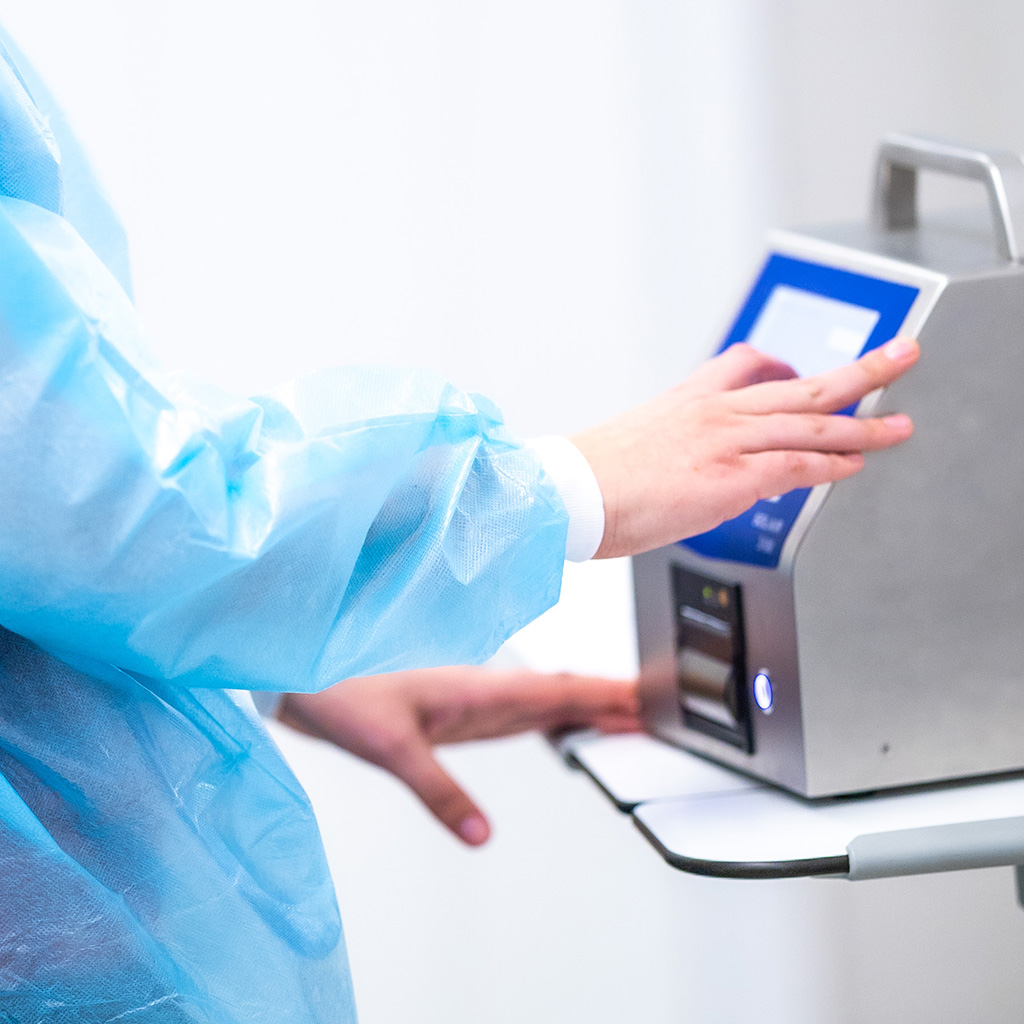
Agidens validates cleanroom facilities of pharmaceutical multinational

Agidens has validated the cleanroom facilities of a pharmaceutical multinational. The facilities cover an area of 2589.81 m² and are divided into grade C and B. Approximately 639 particle counts and 191 recovery tests were conducted over 9 working days.
GUIDELINES FOR CLEANROOM VALIDATION
Cleanroom facilities are essential in the production within the life sciences and pharmaceutical industry. These spaces are crucial for the safe and sterile production of vaccines and medicines. Depending on the specific requirements of the production process, cleanrooms must meet certain cleanliness classes or grades and the associated standards.
According to ISO classification, a cleanroom is a space where the number of particles is controlled. This always means that particle counts are performed when classifying a cleanroom.
Cleanrooms are classified based on a particle count according to standards, the most common being ISO 14644-1 and GMP grades, as described in Eudralex Volume 4 Annex 1. During an inspection, it must be demonstrated that this classification meets the requirements of the activities taking place there.

PROJECT APPROACH
Agidens conducted an extensive validation of the cleanroom facilities of a pharmaceutical multinational in Ghent. The facilities cover a total area of 2589.81 m², divided into grade C and B. During the project, 639 particle counts and 191 recovery tests were carried out.
The validation was fully digitally documented in the customer’s systems, making the progress transparent and traceable. Additionally, Agidens also completed 130 maintenance orders, which were carefully monitored and completed.
Efficient planning and good communication between Agidens and the customer enabled the validation to be completed in just 9 working days, faster than expected and planned.
Particle counts
When performing particle counts in cleanrooms, we follow a structured step-by-step plan. We move from location to location to verify that the particle count meets ISO requirements for each zone.
For a grade C zone, the concentration may not exceed 352,000 particles of 0.5 µm per m³ of air and for particles of 5.0 µm, it may not be more than 2,900 particles per m³. In a grade B zone, the standards are stricter: here the concentration may not exceed 3,520 particles of 0.5 µm per m³ and for particles of 5.0 µm, this is limited to a maximum of 29 particles per m³.
During these tests, we use multiple particle counters simultaneously in each room. After the measurements are completed, the results are stored according to Good Documentation Practice (GDP) in a central online system.
Recovery tests
Recovery tests in cleanrooms are intended to check whether the air circulation is sufficient to efficiently remove particles. These particles can arise from various sources, such as people and materials.
During these tests, we introduce smoke near the particle counter and carefully monitor how the particle count changes over time. The results are then compared to the requirements of the ISO standards.
For class B and C zones, there must be a reduction of respectively 100 times and 10 times in the number of particles within a maximum of 20 minutes.
WHY CHOOSE AGIDENS?
By choosing Agidens, customers ensure a partner that not only has the necessary expertise but also truly understands what is required to successfully handle a validation project. This makes us a reliable choice for companies looking for cleanroom validation services.
“We would like to thank everyone at Agidens for their flexibility during the execution and documentation. We are extremely satisfied with the approach and quality of the work delivered. Meanwhile, we have received the good news that the cleanroom certification report has been fully approved. This is an important milestone as we can now proceed to the Environmental Monitoring Performance Qualification (EMPQ).”
CONTACT US FOR MORE INFORMATION
Our expertise and customer-oriented approach enable us not only to meet the requirements but also to proactively think along. This results in customized solutions that increase efficiency.
Curious about our comprehensive validation approach? We would be happy to explain it to you.



